I've Just Begun to Tell You: Prelude, Diminuendo, Coda
Player piano scrolls are a perfect, paradoxical material metaphor to express the liminal space between silence and sound because the cutouts––the absence of the paper––indicate the presence of sound.
With a 2012 Traveling Fellowship grant from the School of the Museum of Fine Arts, I researched the history of the player piano for two reasons. First, to ask: does the capacity to replicate, through mechanical reproduction, diminish the aesthetic value of the singular? This was a question raised in the heyday of player pianos and remains relevant today in printmaking and contemporary art. Secondly, I wanted to explore the mechanics and visual evidence of making sound from their scrolls.
Because I am hearing impaired (since infancy), I rely on visual and sensual cues as much as auditory input to communicate: a magnification of the way humans encode and decode information. In order to evoke the complexity of both spatial and temporal elements of communication, my installation overtly dismantles player piano scrolls from their boxes and reconstructs them in the spirit of a music machine to suggest the shape of sound and the flux of meaning.
I've Just Begun to Tell You: Prelude, Diminuendo, Coda, a three-part installation with sound, depicts the ineffable ways we assemble meaning from various and simultaneous signs, symbols and stimuli. Since we hear faster than we see, understanding visual and auditory input is continually complicated by time, memory and the anticipation of outcomes.
Part One: Prelude invokes the musical notation found on the scrolls by arranging their spindles and cast shadows in patterns.
In Part Two: Diminuendo, the scroll boxes function as singular words (re)configuring to passages that ultimately, in the form of monoprinted scrolls, spill into a mass of recognizable, but complicated imagery (intaglio prints). The shadows here resonate as visual echoes.
Part Three: Coda consists of hand-pulled intaglio prints that convey the main motifs of telling and listening, gesture and reception.
To produce the 3-minute sound track, I distilled hundreds of hours of audio information taken during the trip. Because I cannot hear all the sounds, I created the soundscape largely by looking at audio frequencies and recalling the sites of recorded sounds.
My travels included private tours in the two museums that house the largest collections of automated instruments: the University of Leipzig, and the Seewan, Switzerland Museum as well as a private tour of the factory in Stefa, Switzerland that manufactures the hearing aids I wear. I also visited Documenta 13 in Kassel, Germany, and the Museum of Music in Vienna, Austria. During the trip I kept an audio journal and made sketches, notes, and photographs. My installation is choreographed to represent the peripatetic sensation of travel: moving through different experiences and sensations while always yearning to make sense and connections, which are, inevitably, elusive.
I was struck by how similarly large sized machines, both the player pianos and the robots that make the hearing aids (from two distinct eras of technology, the late 19th and 21st centuries), produce such delicate sounds. These machines operate by repeating sets of rules. Yet the outcome––what is heard––is messy, subjective, social and never quite capable of exact repetition. To me, this is the embodiment of the notion that we communicate in a loop that repeatedly begins, but never quite reaches certitude.
I've Just Begun to Tell You: Prelude, Diminuendo, Coda
17 Cox Gallery, Beverly, MA
Variable sizes, shown in studio approximate total is 10 ft high x 33 ft wide
Player piano scroll boxes, spindles, scrolls (with monoprint and intaglio) and multi-plate intaglio with relief prints
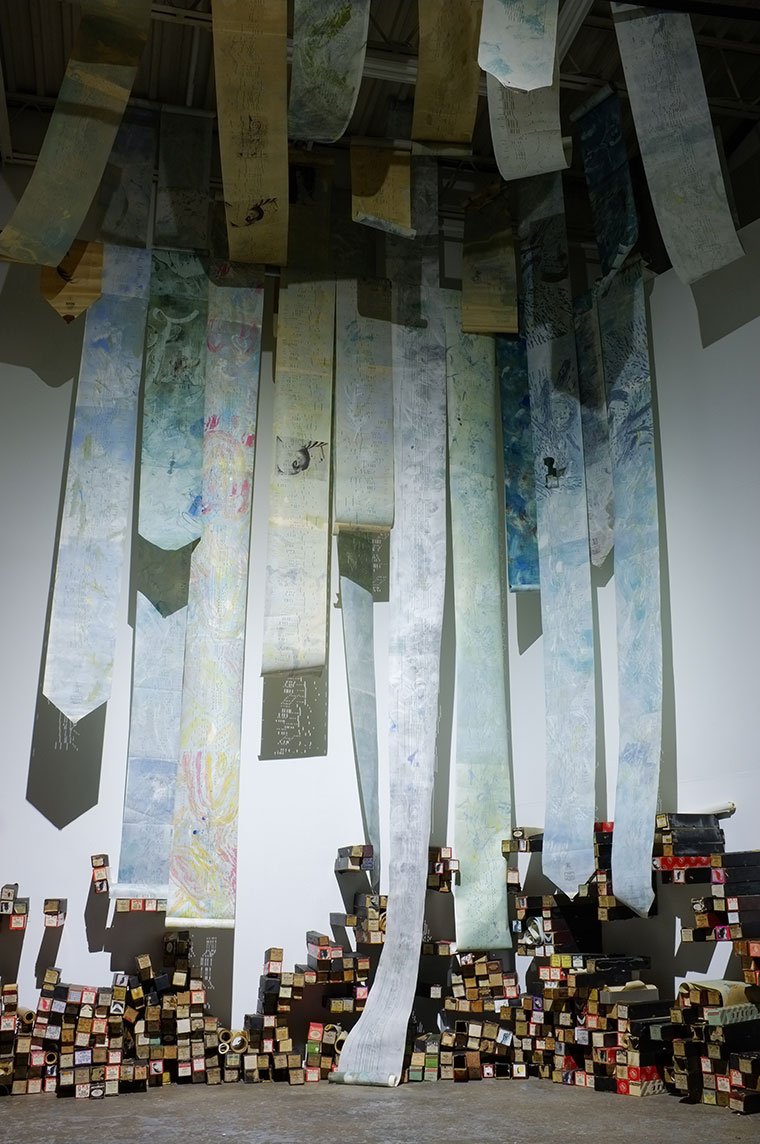
I've Just Begun to Tell You: Prelude, Diminuendo, Coda, gallery view
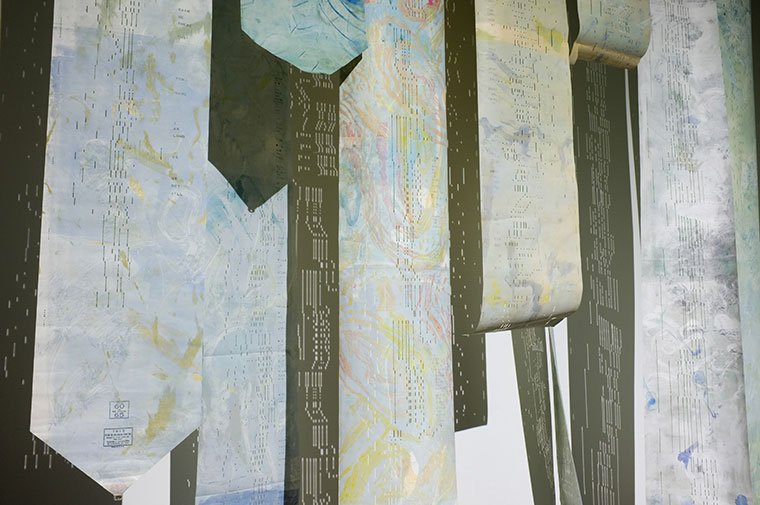
I've Just Begun to Tell You: Prelude, Diminuendo, Coda, gallery view
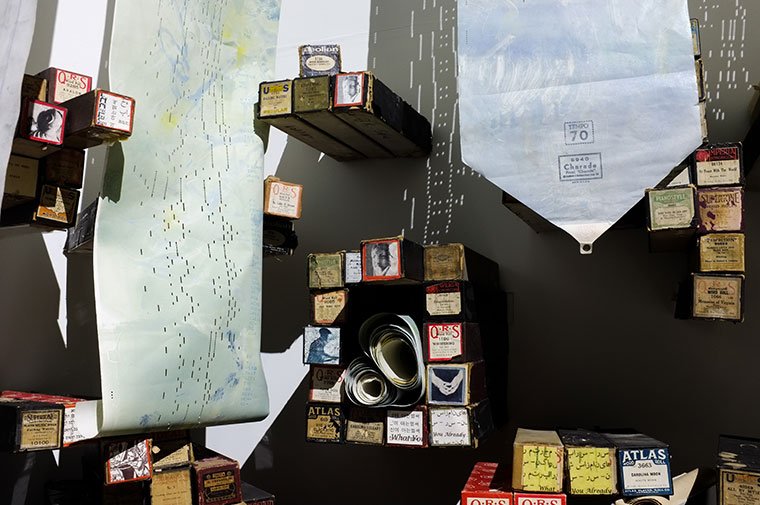
I've Just Begun to Tell You: Prelude, Diminuendo, Coda, gallery view
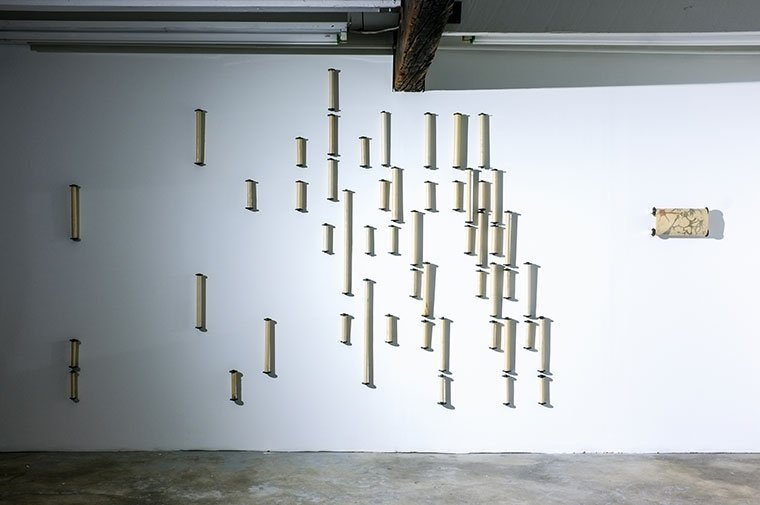
I've Just Begun to Tell You: Prelude, Diminuendo, Coda, gallery view
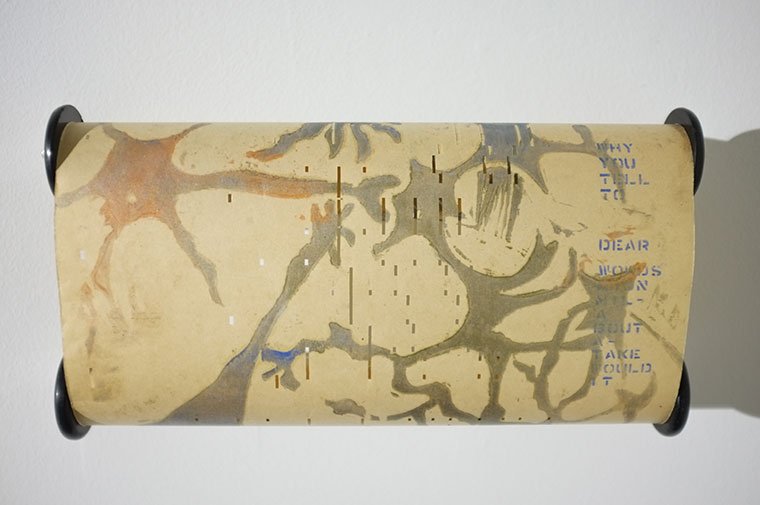
I've Just Begun to Tell You: Prelude, Diminuendo, Coda, gallery view
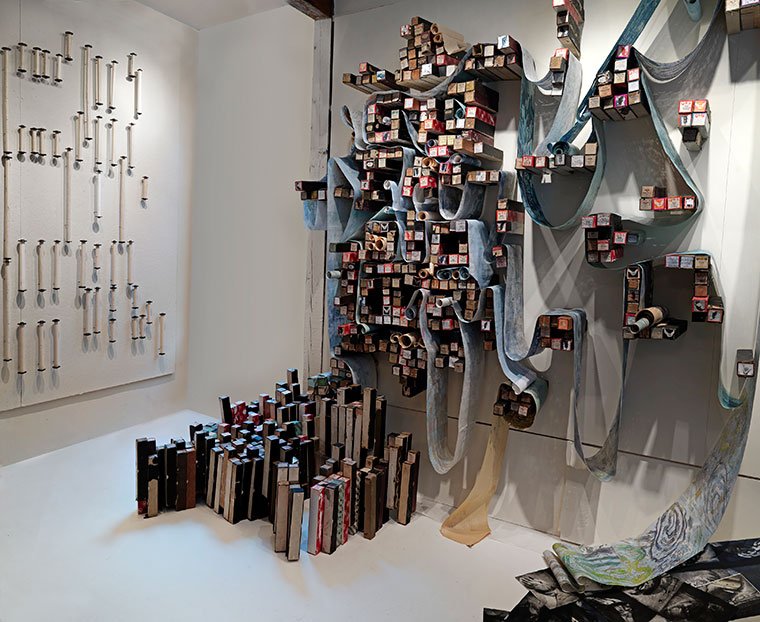
Prelude and Diminuendo, installation view
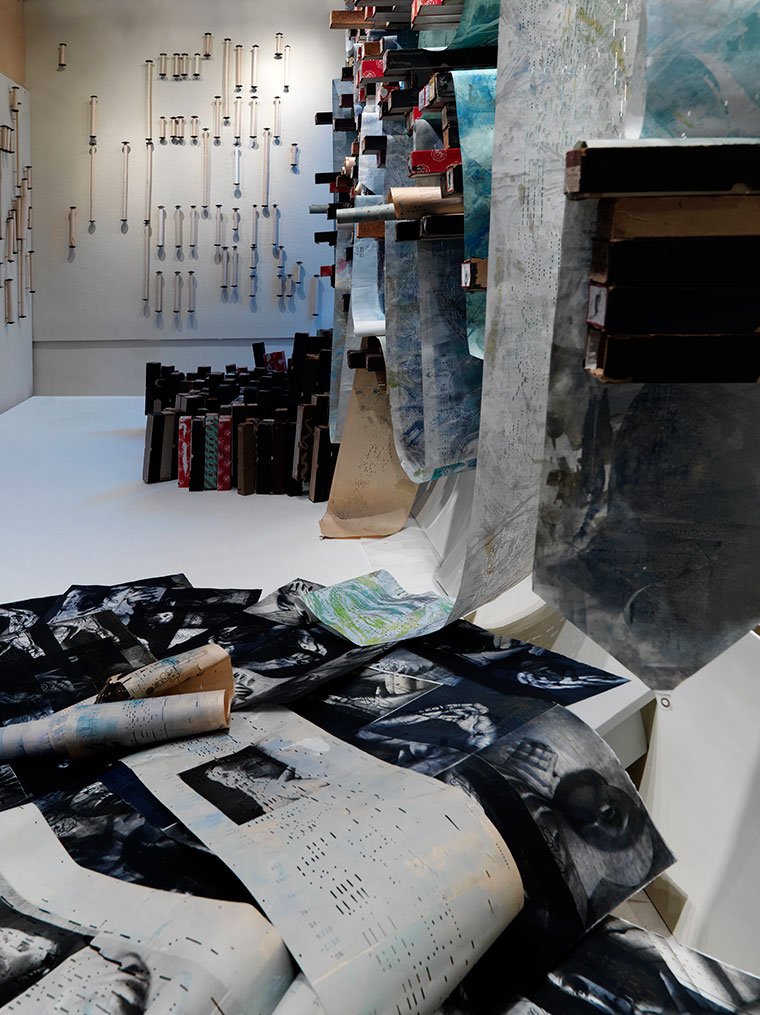
Prelude and Diminuendo, installation view
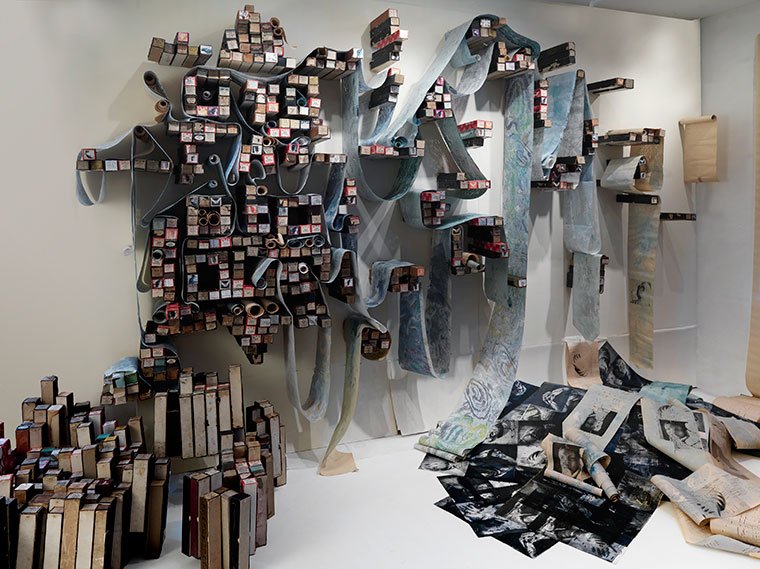
Prelude and Diminuendo, installation view

Diminuendo, detail
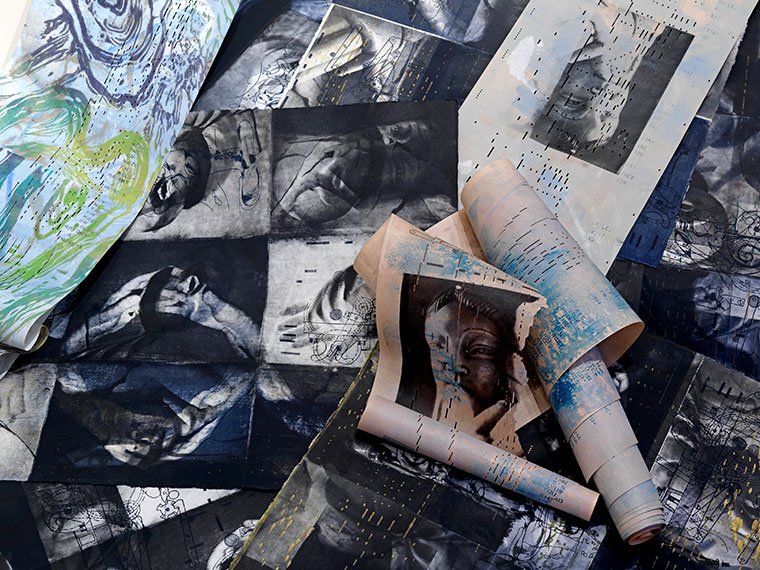
Diminuendo with Coda 4, detail
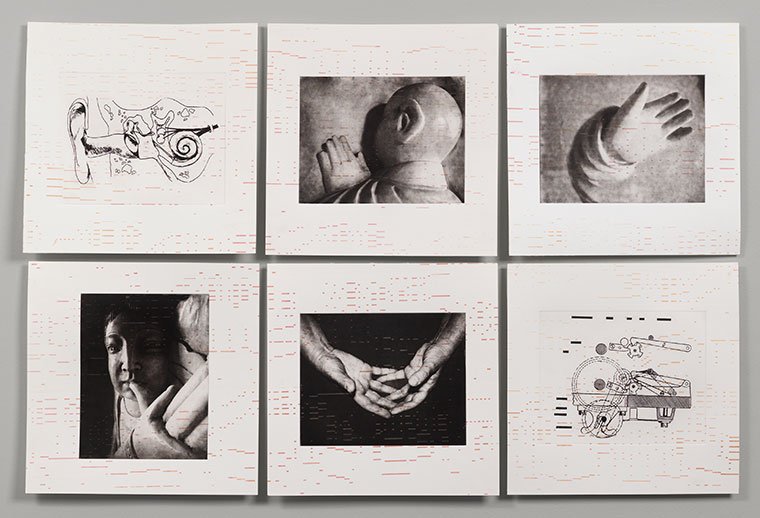
Coda 22" x 30" multi-plate intaglio with relief roll
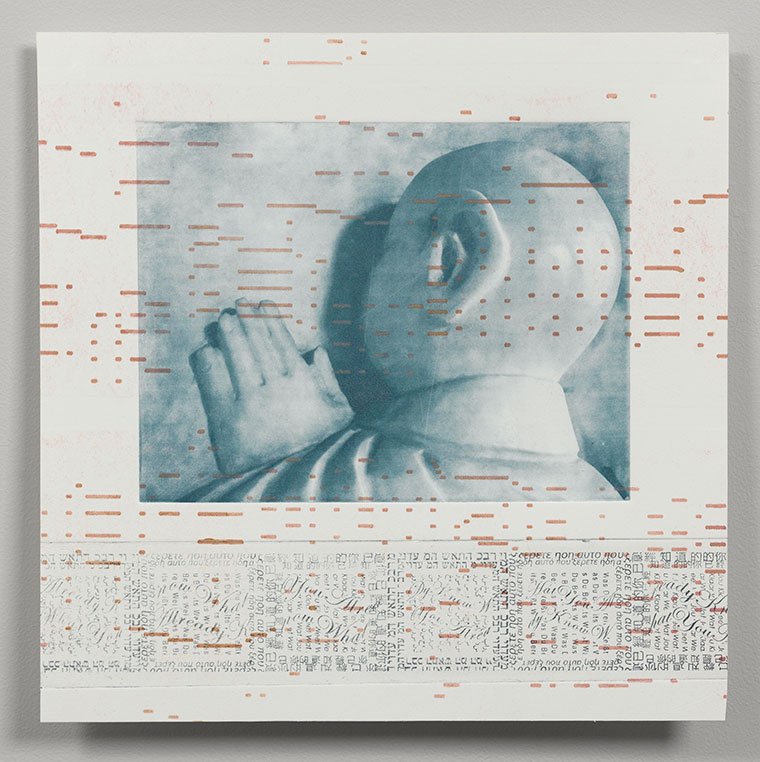
Coda 1 14" x 14" multi-plate intaglio with relief roll
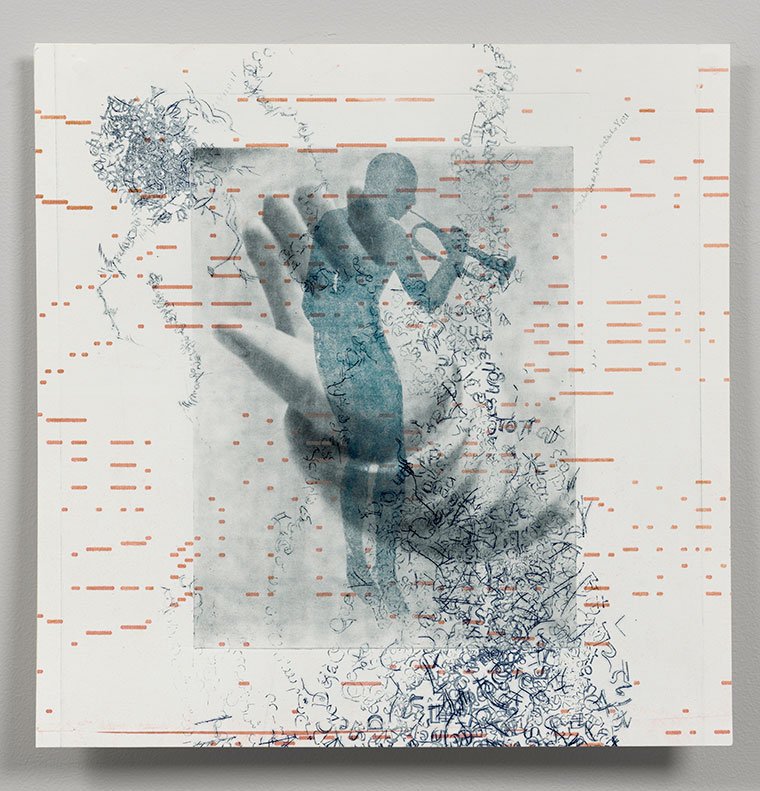
Coda 2 14" x 14" multi-plate intaglio with relief roll and shaped plate

Coda 3 30" x 22" multi-plate intaglio
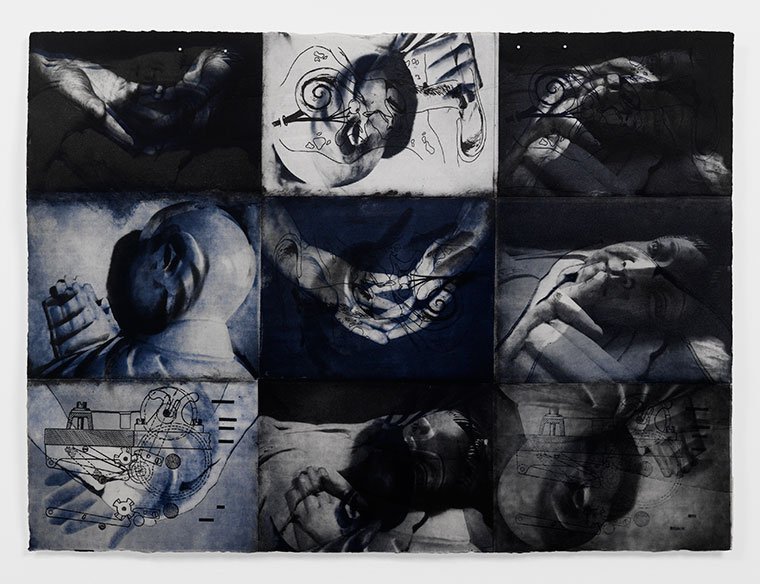
Coda 4 22" x 30", multi-plate intaglio